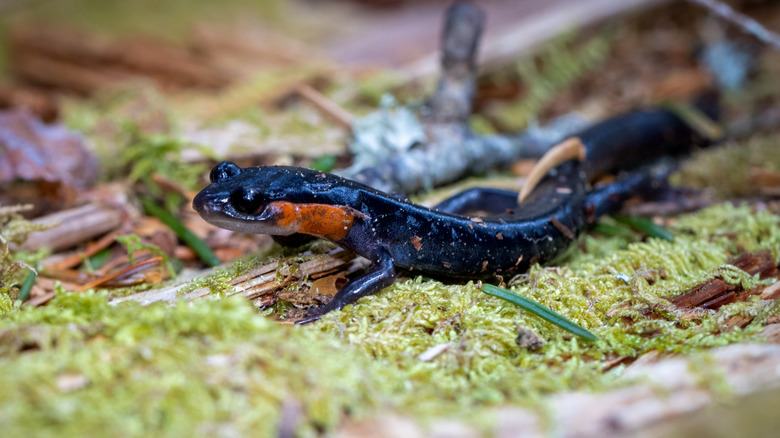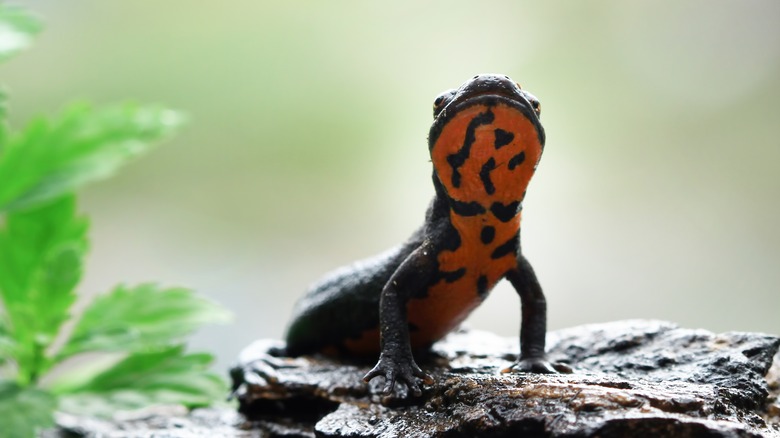This Breathtaking National Park Is Also Known As The 'Salamander Capital Of The World'
The Great Smoky Mountains, home to one of the highest hiking peaks in the eastern United States, is an amazing location for outdoor adventures. Spanning both Tennessee and North Carolina, Great Smoky Mountains National Park is the epitome of this subrange of the southern Appalachian Mountains. It is a breathtaking place to visit ... and it also happens to be the best place in the world to find salamanders.
For lovers of these quirky, tiny amphibians, Great Smoky Mountains National Park is known as the "Salamander Capital of the World." Closely related to frogs, salamanders thrive in damp environments that have access to plenty of water. And the Great Smoky Mountains are a perfect environment for these wonderfully colorful creatures.
These mountains got their name from the perpetual "smoke" that hangs around them. This is actually a consistent fog, which not only gives them a mystical quality but also creates a wonderfully damp and sheltered environment for salamanders. And being less than an hour from Asheville, North Carolina, and Knoxville, Tennessee, gaining access to this stunning salamander haven is one of the easiest things for exploring naturalists to do.
What kind of salamanders live in Great Smoky Mountains National Park?
Salamanders play an important role in the park's ecosystem, acting as predators for numerous types of annoying insects, including mosquitoes, slugs, snails, and bloodworms. There are at least 31 species of salamanders in the park.
On any given day, salamanders represent the majority of vertebrate animals in the park, including the over-13 million human visitors the park sees a year. Across the park, you'll most commonly find Southern gray-cheeked, dusky, Southern Appalachian, red-cheeked, spotted, and Blue Ridge spring salamanders as well as red-spotted newts. And that's, honestly, just the tip of the iceberg. The most special types of salamander in the park are the Jordan salamander, which can only be found in the Great Smoky Mountains, and the rare and protected Eastern hellbender, the largest salamander species in America, which can grow up to 2 feet long.
A vast majority of the salamanders — 25 species to be specific — are what are known as lungless salamanders. Lacking lungs, these salamanders breathe in oxygen through their skin and are most commonly found along the park's abundant riverbeds, ponds, and wetlands.
Where to find salamanders at Great Smoky Mountains National Park
While you can find salamanders virtually anywhere you go in Great Smoky Mountains National Park, if you're pressed for time and only have two days to spend in the national park, there are a few places in the park where you are guaranteed to spot these fun little amphibians. Waterfalls are a key habitat for salamanders, and Abrams Falls is one of the best places in the whole park to see salamanders scurrying about. They can be seen on virtually all of the rocks, in the water, or along the shoreline of these mesmerizing falls. Grotto Falls is another excellent location to spot salamanders.
As for trails, the best in the whole park to see salamanders is the 0.4-mile Spruce-Fir Nature Trail. Red-cheeked salamanders are abundant here, as are Blue Ridge spring salamanders, which are bright orange with little blue freckles laced down their spine. Other sports worth adventuring to are Rainbow Falls, Mingus Mill, and Raven Fork. Salamander-spotting is a great family-friendly activity to do in the park since some of the trails are relatively short and beginner-friendly.
Naturally, when it comes to looking for salamanders, it is best to observe them as opposed to trying to handle them. Since most salamanders breathe through their skin, the oils and other substances found on your hands can actually clog their pores, which is fatal to them. Feel free to get up close to one, but try to take photos rather than pick them up. It's not as though you will miss any while you're here — it's not called the "Salamander Capital of the World" for nothing.


